Traditional Healing Practices

Welcome to a world where healing is not just a physical process, but a holistic journey that encompasses mind, body, and spirit. Traditional healing practices, steeped in ancient cultures and indigenous wisdom, have withstood the test of time, offering individuals a profound connection to nature and a deep understanding of the interconnectedness of all things. In this article, we will explore the rich history and significance of traditional healing practices, shedding light on the role of herbal remedies, spirituality, and ethical considerations in this timeless art.
The History of Traditional Healing
In exploring the rich heritage of traditional healing, we delve into the ancient roots and practices that have shaped the diverse landscape of traditional medicine systems. The history of traditional healing spans back thousands of years, with each culture and civilization contributing its unique insights and techniques. From the Egyptians’ use of medicinal plants to the Greeks’ emphasis on balance and harmony, traditional healing has been woven into the fabric of human existence.
Traditional healing practices were deeply rooted in cultural beliefs and knowledge, and they were passed down through generations as ancestral wisdom. The Chinese developed traditional medicine systems like acupuncture and herbal remedies, while indigenous peoples around the world cultivated their own unique healing traditions. These ancient healing practices were grounded in a holistic understanding of the human body and its connection to the natural world.
The history of traditional healing is a testament to the enduring wisdom and effectiveness of these age-old practices. Although modern medicine has made remarkable advancements, traditional healing continues to offer valuable insights into holistic well-being, emphasizing the balance of mind, body, and spirit.
The Significance of Herbal Remedies in Traditional Healing
Herbal remedies have played a significant role in traditional healing practices for centuries. Ancient cultures recognized the healing properties of various plants and developed remedies using herbs to address a wide range of ailments. These remedies are based on the belief that nature provides us with everything we need for healing.
Herbal remedies are known for their natural healing properties and minimal side effects, making them a popular choice for those seeking alternative medicine remedies. They offer a holistic approach to wellness by treating the root causes of illness, promoting overall well-being, and restoring balance to the mind, body, and spirit.
“Nature itself is the best physician.” – Hippocrates
Through the use of herbal remedies, individuals can take an active role in their health and well-being. Whether it’s sipping on a soothing cup of chamomile tea for relaxation or incorporating turmeric into their diet for its anti-inflammatory benefits, herbal remedies provide a natural and accessible way to support wellness.
The Benefits of Herbal Remedies in Traditional Healing
- Natural healing properties
- Minimal side effects
- Holistic approach to wellness
- Supports overall well-being
- Restores balance to mind, body, and spirit
Common Herbal Remedies Used in Traditional Healing
| Herb | Benefits |
|---|---|
| Chamomile | Relaxation, digestive support |
| Lavender | Calming, aids sleep |
| Ginger | Anti-inflammatory, digestive support |
| Peppermint | Relieves indigestion, soothes headaches |
| Echinacea | Boosts immune system, fights colds |
By incorporating herbal remedies into their daily lives, individuals can harness the power of nature and take proactive steps towards their well-being. From teas and tinctures to topical ointments and capsules, there are many ways to experience the benefits of herbal remedies in traditional healing practices.

The Role of Spirituality in Traditional Healing
In traditional healing practices, spirituality plays a vital role, providing a profound connection between individuals and higher powers. This spiritual aspect is integral to the holistic approach of traditional healing, where the mind, body, and spirit are seen as interconnected and essential for overall well-being. Through ancestral healing rituals and cultural healing therapies, individuals can tap into spiritual energies that promote healing and restore balance.
Ancestral healing rituals hold a special place in traditional practices, honoring the wisdom and guidance of one’s ancestors. These rituals often involve offerings, prayers, and ceremonies that seek the support and healing energies of those who came before us. By connecting with our ancestors on a spiritual level, we can access their wisdom and experience, providing us with guidance and support in our own healing journey.
Cultural healing therapies also incorporate spirituality as a means of healing. These therapies draw on cultural beliefs and practices, incorporating rituals and ceremonies that honor and connect with higher powers. By engaging in these spiritual practices, individuals can experience a deep sense of connection, belonging, and cultural pride, which can promote healing on multiple levels.

The Healing Power of Spiritual Connection
“Spirituality is not just about faith; it is a means of connecting with something greater than ourselves, whether that be a higher power, the natural world, or our ancestors. Through this connection, we can access a source of healing energy and wisdom that transcends our individual selves.
By embracing spirituality in traditional healing, individuals can tap into a source of healing energy that goes beyond the physical realm. Whether through ancestral healing rituals or cultural healing therapies, the spiritual connection offers a profound sense of comfort, support, and guidance.
| Benefits of Spirituality in Traditional Healing |
|---|
| Deepens the sense of connection and belonging |
| Provides comfort and emotional healing |
| Offers guidance and support through ancestral wisdom |
| Promotes holistic healing on multiple levels |
Overall, the role of spirituality in traditional healing practices cannot be overstated. By embracing this spiritual aspect, individuals can tap into a source of healing energy, wisdom, and guidance that transcends the physical realm. Whether through ancestral healing rituals or cultural healing therapies, spirituality provides a profound connection to higher powers, ancestors, and the natural world, promoting holistic well-being and restoring balance.
The Role of Traditional Healing in Modern Society
Traditional healing practices have a long-standing history and continue to play a significant role in contemporary society. While modern medicine emphasizes scientific research and technological advancements, traditional healing offers a holistic approach that considers the interconnectedness of mind, body, and spirit. Let’s explore the unique aspects of traditional healing and how they contrast with modern medicine, as well as the ways in which traditional methods are being adapted for contemporary use.
Traditional Healing vs. Modern Medicine
Traditional healing and modern medicine are often seen as two distinct approaches to health and well-being. Modern medicine relies on pharmaceutical interventions, extensive research, and advanced technologies to diagnose and treat ailments. In contrast, traditional healing emphasizes natural remedies, rituals, and spiritual practices to promote healing and restore balance within the individual. While both approaches have their merits, there is a growing recognition of the value of integrating traditional healing methods into modern healthcare systems.
Traditional healing provides a more holistic perspective, considering the physical, emotional, and spiritual aspects of a person’s well-being. This approach recognizes that true healing involves addressing the root cause of illness, rather than just treating symptoms. By incorporating traditional healing practices into modern medicine, individuals can benefit from a comprehensive and multifaceted approach to their health journey.
Adapting Traditional Methods for Contemporary Use
As society evolves, traditional healing methods are also being adapted to meet the needs of modern individuals. Many people are seeking alternative and complementary approaches to their health and well-being, and traditional healing offers a wealth of knowledge and practices that can be integrated into contemporary lifestyles.
Traditional healing practices are being embraced by practitioners and individuals alike, who recognize the value of natural remedies, rituals, and cultural healing therapies. Adapting traditional methods for contemporary use means finding ways to make them accessible and relevant to a wider audience. This includes incorporating traditional remedies into alternative medicine practices, integrating cultural healing therapies into mainstream healthcare settings, and exploring innovative approaches that honor the wisdom of traditional healing while addressing modern needs.
| Traditional Healing | Modern Medicine |
|---|---|
| Emphasizes holistic well-being | Focuses on specific symptoms and diseases |
| Uses natural remedies and rituals | Relies on pharmaceutical interventions |
| Incorporates spirituality and cultural practices | Relies on scientific research and technology |
| Considers the interconnectedness of mind, body, and spirit | Focuses on the physical aspects of health |
By combining the strengths of traditional healing and modern medicine, individuals can benefit from a more comprehensive and holistic approach to their health and well-being. Integrating the wisdom of traditional healing practices into modern healthcare systems allows for a more personalized and culturally sensitive approach, empowering individuals to take an active role in their own healing journey.

The Importance of Community in Traditional Healing
Traditional healing practices are deeply rooted in community and collective well-being. In many cultures, healing is seen as a communal responsibility, with the community coming together to support and uplift individuals in times of illness or imbalance. Holistic healing techniques often involve not only the individual receiving the healing but also the active participation of the community, through rituals, ceremonies, and shared practices.
One of the key aspects of traditional healing is the sense of community support and connection. When individuals face health challenges, the community rallies together to provide emotional, physical, and spiritual support. This sense of belonging and support has a profound impact on the healing process, as it creates a nurturing environment where individuals feel safe, understood, and cared for.
Through collective rituals and ceremonies, the community engages in shared practices that promote healing and well-being. These rituals often involve the use of symbols, chants, and prayers, creating a sacred space where individuals can connect with higher powers and tap into spiritual energies. The participation of the community amplifies the healing intention and energy, fostering a deep sense of unity and interconnectedness.
The Role of Community in Holistic Healing
Traditional healing practices recognize that holistic healing goes beyond the physical body and encompasses the emotional, mental, and spiritual aspects of an individual. The support and involvement of the community are crucial in addressing these various aspects and promoting holistic well-being.
The community provides a network of social support, offering comfort, encouragement, and guidance to individuals on their healing journey. In traditional healing, the focus is not solely on addressing symptoms but on understanding the root causes of illness or imbalance. The community plays a vital role in helping individuals explore and address these underlying causes, providing insights, wisdom, and a shared understanding of cultural and spiritual perspectives.
Furthermore, the knowledge and expertise of traditional healers are often deeply intertwined with the cultural traditions and practices of the community. By engaging with the community, traditional healers can draw on this collective wisdom and incorporate cultural healing therapies that are specific to the community’s beliefs and values. This ensures that the healing process is not only effective but also culturally relevant and respectful.
The Transformative Power of Community Support
The importance of community in traditional healing extends beyond the individual’s direct experience of healing. It also fosters a sense of belonging, connection, and unity within the community itself. As individuals come together to support one another’s healing, they cultivate a sense of shared responsibility and mutual care.
Through community support, individuals not only find healing but also gain a deeper understanding of themselves and their place within the community. This mutual exchange of healing energy and knowledge strengthens the fabric of the community, promoting resilience, harmony, and cultural continuity.
By recognizing and embracing the importance of community in traditional healing, we can tap into the transformative power of collective support and create a harmonious balance between individual well-being and the well-being of the community as a whole.
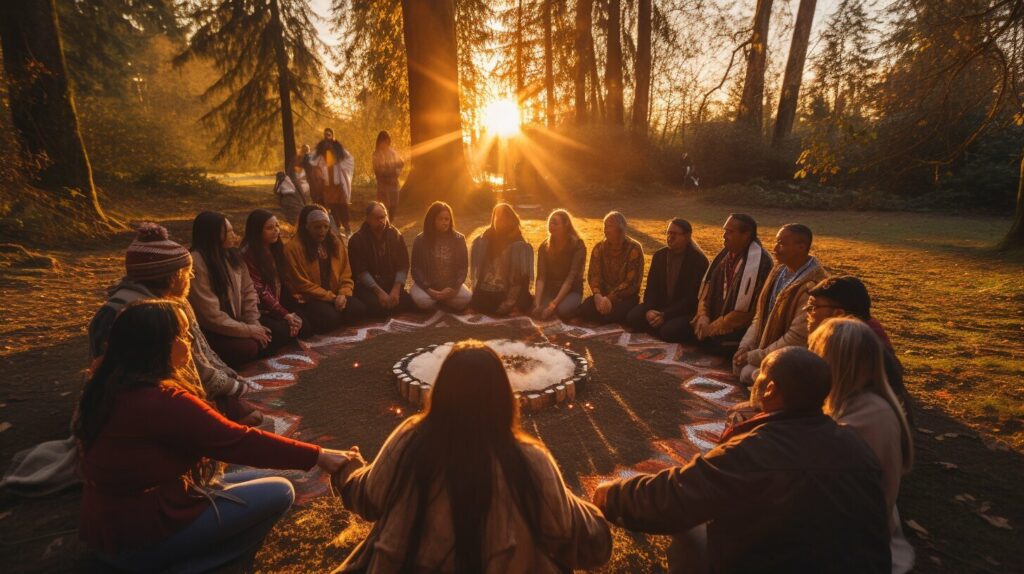
| Benefits of Community Support in Traditional Healing | Examples |
|---|---|
| Promotes emotional well-being | Sharing of experiences, providing a safe space for emotional expression |
| Enhances spiritual connection | Participation in communal rituals, prayers, and ceremonies |
| Provides cultural guidance | Preservation of cultural traditions, sharing of ancestral knowledge |
| Offers physical assistance | Practical support with daily tasks, caregiving, and transportation |
The Importance of Ethical Considerations and Training in Traditional Healing
When it comes to traditional healing practices, ethical considerations and proper training are of utmost importance. Traditional healers hold a position of trust and responsibility within their communities, providing care and guidance based on their extensive knowledge and experience. To ensure the highest level of integrity in their practice, healers undergo specialized training and certification in traditional healing methods. This not only ensures that the practices are respected and preserved but also safeguards the well-being and safety of those seeking traditional healing.
Training and certification in traditional healing methods are rigorous processes that vary depending on the cultural traditions and practices involved. Indigenous healing traditions, for example, often involve long and intensive apprenticeships, where knowledge is passed down through generations. This ensures that the practices are maintained with the highest level of expertise and cultural understanding.
By undergoing proper training and certification, traditional healers are equipped with the necessary skills and knowledge to provide effective and culturally appropriate care. They also learn about the ethical considerations that are central to traditional healing. This includes issues of consent, confidentiality, and cultural sensitivity. Ethical considerations ensure that healing practices are respectful, inclusive, and aligned with the values and beliefs of the individuals seeking traditional healing.
| Ethical Considerations | Training and Certification |
|---|---|
| • Consent | • Cultural protocols |
| • Confidentiality | • Decades of experience |
| • Cultural sensitivity | • In-depth knowledge |
“Ethical considerations play a vital role in traditional healing practices. Traditional healers are often respected members of their communities, trusted with the responsibility of providing care and guidance based on their knowledge and experience.”
The Role of Ethics in Traditional Healing
Ethics guide traditional healers in their interactions with individuals seeking healing. They ensure that healers prioritize the well-being and autonomy of their clients, while also maintaining cultural integrity and respect. Ethical considerations also play a crucial role in navigating the boundaries and limitations of traditional healing practices. By adhering to ethical standards, healers create a safe and supportive environment for individuals to embark on their healing journeys.
- Respecting individual autonomy and consent
- Maintaining confidentiality and privacy
- Promoting cultural sensitivity and inclusivity
- Adhering to traditional healing protocols and practices
- Providing accurate and transparent information
By prioritizing ethical considerations in traditional healing, healers ensure that individuals receive the highest quality of care that is both effective and culturally appropriate. This fosters trust, respect, and a strong sense of community support, further enhancing the healing process.

Proper training and certification in traditional healing methods ensure that the integrity and wisdom of these traditions continue to thrive. By upholding ethical standards and preserving cultural knowledge, traditional healing practices can be shared with future generations, ensuring that the legacy of traditional healing endures for years to come.
The Role of Nature and Environment in Traditional Healing
Nature and the environment play a crucial role in traditional healing practices, which embrace the interconnectedness of humans and the natural world. Traditional healers recognize the innate healing powers present in nature and incorporate various elements of the environment into their holistic healing techniques. By harnessing the energy and wisdom of the natural world, traditional healing practices promote harmony and well-being on multiple levels.
In traditional healing, nature is often viewed as a source of wisdom, providing insights into the balance and interconnectedness of all living beings. The use of herbal remedies derived from plants is a prime example of how nature’s gifts are utilized to promote healing. Each plant is believed to possess unique properties that can address specific ailments and imbalances within the body. By harnessing the natural healing properties of plants, traditional healers offer individuals a holistic approach to wellness.
In addition to herbal remedies, traditional healing practices often incorporate outdoor rituals and ceremonies. These rituals are designed to connect individuals with the natural elements such as the sun, moon, and earth, fostering a deep sense of grounding and spiritual connection. By engaging with the environment in a ceremonial context, traditional healing practices emphasize the importance of living in harmony with nature and recognizing the profound impact it has on our well-being.

Overall, the role of nature and the environment in traditional healing practices highlights the deep reverence and respect that traditional healers have for the natural world. By embracing nature’s innate healing powers and incorporating them into holistic healing techniques, traditional healers provide individuals with a powerful means of achieving balance and well-being.
Adapting Traditional Methods for Contemporary Use
Traditional healing practices have a rich history dating back thousands of years, but their relevance extends far beyond the past. Today, many individuals and practitioners are exploring ways to adapt these traditional methods for contemporary use, bringing the wisdom of ancient healing into modern lifestyles. By integrating traditional healing practices with alternative medicine remedies, individuals can access a holistic approach to health and well-being that complements modern healthcare systems.
One way to adapt traditional methods for contemporary use is by incorporating traditional remedies into alternative medicine practices. Herbal medicine, acupuncture, energy healing, and mindfulness techniques are just a few examples of alternative medicine remedies rooted in traditional healing practices. These remedies offer natural, holistic approaches to healing that can be used in conjunction with modern medical treatments.
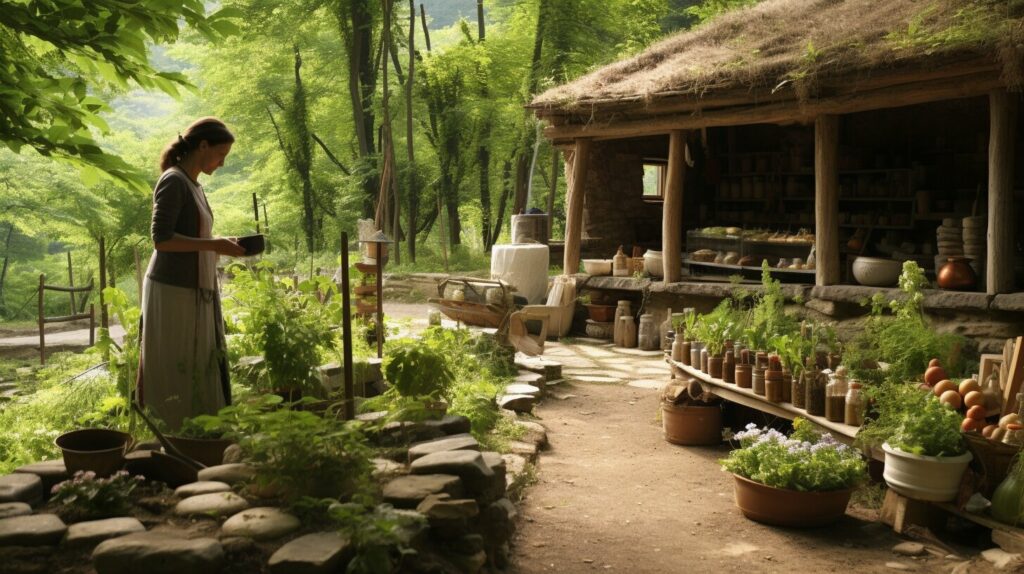
Another way to adapt traditional methods is by integrating cultural healing therapies into healthcare settings. Cultural healing therapies are deeply interconnected with the cultural identity and heritage of specific communities. These therapies incorporate rituals, ceremonies, and practices that honor the wisdom of ancestors and provide a sense of connection and cultural pride. By integrating these cultural healing therapies into healthcare settings, individuals can benefit from the holistic approach to healing that traditional practices offer.
| Traditional Methods | Contemporary Use |
|---|---|
| Herbal medicine | Incorporating herbal remedies into alternative medicine practices |
| Ancestral healing rituals | Integrating cultural healing therapies into healthcare settings |
| Spiritual healing practices | Combining traditional spiritual practices with mindfulness and meditation techniques |
Traditional healing practices have a wealth of wisdom to offer, and by adapting them for contemporary use, we can create a more holistic approach to health and well-being. The integration of traditional methods with alternative medicine remedies and cultural healing therapies allows us to honor the past while addressing the needs of the present. Through these adaptations, we can tap into the timeless wisdom of traditional healing and find new ways to promote wellness in our modern lives.
Training and Certification in Traditional Healing Methods
Training and certification in traditional healing methods are integral for preserving and promoting the rich traditions and knowledge passed down through generations. Indigenous healing traditions, in particular, hold a deep reverence for the wisdom and practices developed by their ancestors. These traditions require individuals seeking to become traditional healers to undergo extensive training that encompasses not only the technical skills and healing techniques but also cultural protocols and ethical considerations.
Indigenous healing traditions often follow a rigorous process of apprenticeship and mentorship, where aspiring healers learn directly from experienced practitioners. This hands-on approach ensures that knowledge is transmitted accurately and that the integrity of the traditions is maintained. The training involves a deep immersion into the cultural context, learning about the spiritual and symbolic meanings behind the healing practices, and understanding the interconnectedness of the mind, body, and spirit.
Upon completing their training, individuals may seek certification to validate their expertise and demonstrate their commitment to upholding ethical standards in their practice. Certification programs vary depending on the specific tradition and region, but they typically involve practical assessments, written examinations, and evaluations of cultural competence. The certification process ensures that traditional healers meet the highest standards of proficiency and professionalism, safeguarding the integrity and effectiveness of traditional healing methods.
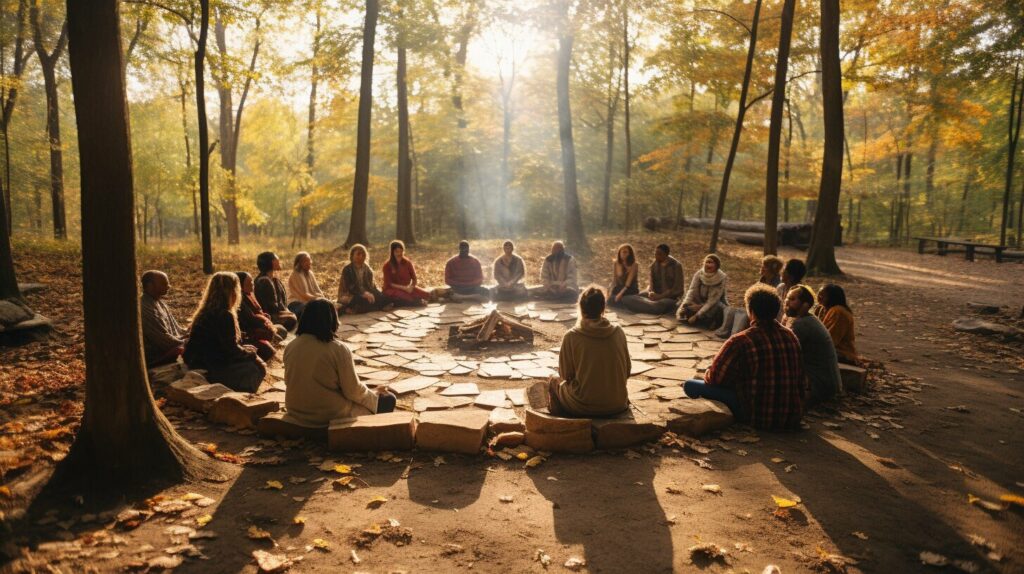
The Holistic Approach to Healing in Traditional Practices
The holistic approach lies at the very heart of traditional healing practices. It recognizes that healing is not just about addressing physical symptoms but also about nurturing the mind, body, and spirit as interconnected elements of well-being. By taking a holistic approach, traditional healing practices offer profound insights and techniques that promote overall health and harmony in all aspects of life.
One of the key aspects of the holistic approach is the incorporation of cultural healing therapies. These therapies draw on the wisdom and traditions of specific cultures, integrating rituals, ceremonies, and practices that are deeply interconnected with the cultural identity and heritage of the community. Cultural healing therapies provide individuals with a sense of connection, belonging, and cultural pride, thereby promoting healing on multiple levels.
In addition to cultural healing therapies, traditional practices also emphasize the use of holistic healing techniques. These techniques encompass a wide range of practices, including herbal remedies, energy healing, rituals, ceremonies, and mindfulness techniques. They work in harmony to restore balance and promote holistic health. By addressing the root causes of illness and imbalance, holistic healing techniques facilitate profound transformations and promote overall well-being.
All-embracing Healing
The holistic approach to healing in traditional practices is all-encompassing. It not only focuses on physical symptoms but also acknowledges the importance of mental, emotional, and spiritual well-being. By integrating cultural healing therapies and holistic healing techniques, traditional healing practices provide individuals with comprehensive care and empower them to take an active role in their own healing journey.
Through the holistic approach, individuals are encouraged to explore the interconnectedness of their mind, body, and spirit and to cultivate a deeper understanding of their own well-being. By embracing the holistic approach to healing, individuals can experience profound transformations and achieve a state of balance and harmony in all aspects of their lives.

Exploring Alternative Medicine Remedies in Traditional Healing
Alternative medicine remedies have gained popularity in recent years as individuals seek holistic and natural approaches to healing. Traditional healing practices, rooted in ancient wisdom and cultural traditions, offer a wide range of alternative medicine remedies that promote well-being and address various health concerns.
Herbal medicine is a prominent alternative medicine practice that utilizes the healing properties of plants to support health and treat ailments. Traditional healers have long recognized the therapeutic benefits of various herbs and have developed remedies and formulations to harness their healing powers. From soothing teas to potent tinctures, herbal remedies offer a natural and gentle approach to addressing common health issues.
The use of energy healing techniques is another significant aspect of traditional healing practices. These techniques aim to restore the flow of energy within the body, promoting balance and facilitating healing. Practices such as Reiki, acupuncture, and acupressure are examples of energy healing methods that have been utilized for centuries in traditional healing systems.
H3: Traditional Healing and Mindfulness Techniques
Mindfulness techniques are also integrated into traditional healing practices, offering individuals a holistic approach to well-being. Mindfulness meditation, breathwork, and visualization exercises are commonly used to promote relaxation, reduce stress, and enhance overall mental and emotional health.
| Alternative Medicine Remedies | Benefits | Examples |
|---|---|---|
| Herbal Medicine | Natural, gentle, and effective | Chamomile tea for relaxation, Echinacea for immune support |
| Energy Healing | Restores energy flow, promotes balance | Reiki, acupuncture, acupressure |
| Mindfulness Techniques | Reduces stress, enhances well-being | Mindfulness meditation, breathwork, visualization |
“Alternative medicine remedies rooted in traditional healing practices offer individuals a holistic and natural approach to well-being. These practices recognize the interconnectedness of mind, body, and spirit and aim to restore balance and promote optimal health.”
It is important to note that while alternative medicine remedies can provide valuable support for overall well-being, it is advisable to consult with a qualified healthcare professional before incorporating them into your healthcare routine. This ensures a comprehensive approach to your health and helps to address any underlying medical conditions.
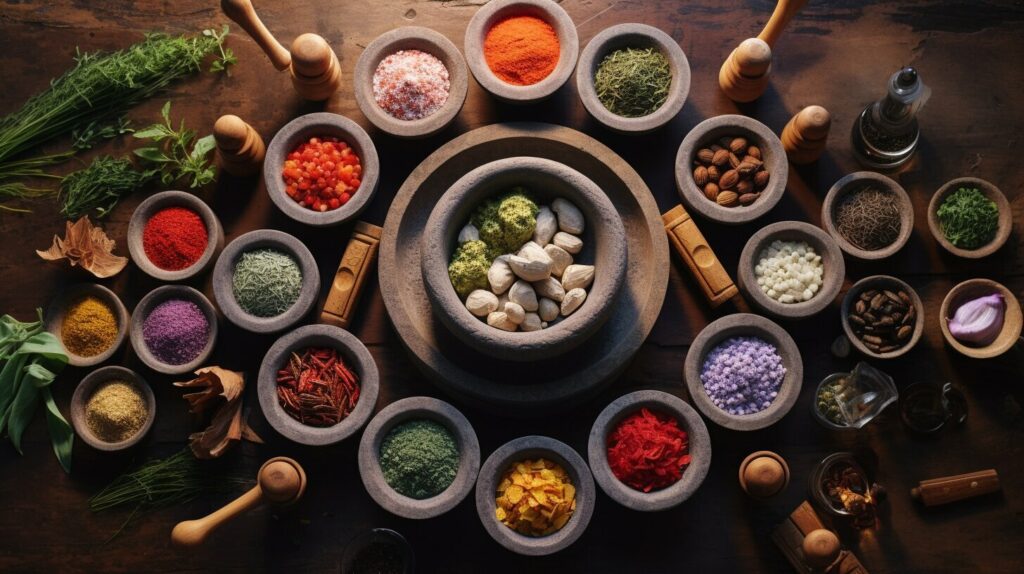
Cultural Healing Therapies in Traditional Practices
Cultural healing therapies are an integral part of traditional healing practices, offering profound insights into the interconnectedness between culture and well-being. These therapies draw on the wisdom and traditions of specific cultures, incorporating rituals, ceremonies, and practices deeply rooted in their cultural identities. Ancestral healing rituals, in particular, play a significant role in cultural healing therapies, honoring and connecting with the ancestors as a source of wisdom and healing energy. Here, we delve into the rich tapestry of cultural healing therapies, exploring their significance and impact on individuals and communities.
While cultural healing therapies differ across cultures, they all share the common goal of promoting healing and balance. These therapies embrace the belief that cultural identity and heritage are integral to overall well-being. By incorporating rituals, ceremonies, and practices that reflect cultural traditions, individuals are provided with a sense of connection, belonging, and cultural pride. This connection strengthens the healing journey, empowering individuals to tap into the depth of their cultural roots for guidance and support.
One of the key elements of cultural healing therapies is the use of ancestral healing rituals. These rituals serve as a bridge between past, present, and future generations, allowing individuals to honor and connect with their ancestors. Ancestral healing ceremonies may include offerings, prayers, and rituals that seek the guidance and support of one’s ancestors in the healing process. By acknowledging and embracing the wisdom and healing energies of their ancestors, individuals can experience profound healing on multiple levels.

Furthermore, cultural healing therapies provide individuals with a holistic approach to healing, addressing not only physical ailments but also emotional, mental, and spiritual well-being. These therapies recognize that well-being is not solely an individual pursuit but is deeply intertwined with the collective well-being of the community. By participating in cultural healing rituals and ceremonies, individuals can experience a sense of unity, support, and interconnectedness, fostering healing on individual and communal levels.
The Role of Rituals and Ceremonies in Healing
In traditional healing practices, rituals and ceremonies play a vital role in promoting healing and spiritual well-being. These sacred practices have been passed down through generations and are deeply rooted in cultural beliefs and traditions. By engaging in healing rituals and ceremonies, individuals can connect with higher powers, invoke spiritual energies, and experience a profound transformative journey towards healing and self-discovery.
Healing rituals and ceremonies create a sacred space where individuals can release negative energy, address emotional wounds, and restore balance in their lives. These practices often involve symbolic actions, prayers, and communal participation, fostering a sense of community support and connection. They provide solace, guidance, and a renewed sense of purpose for those seeking healing on multiple levels.
“Rituals and ceremonies are a powerful means of accessing the spiritual realm and inviting divine intervention in the healing process. They allow individuals to transcend their physical existence and tap into the deeper realms of consciousness, where profound healing and transformation can occur.
Through healing rituals and ceremonies, individuals can access ancient wisdom, reconnect with their cultural heritage, and honor the traditions of their ancestors. These practices offer a holistic approach to healing by addressing not only the physical symptoms but also the emotional, mental, and spiritual aspects of one’s being. By embracing rituals and ceremonies, individuals can find solace, inner peace, and a renewed sense of purpose on their healing journey.
The Healing Power of Rituals and Ceremonies
Healing rituals and ceremonies have been found to have profound effects on individuals’ overall well-being. Research has shown that participating in these practices can reduce stress, anxiety, and depression, while enhancing feelings of connection, hope, and inner strength. The power of rituals and ceremonies lies in their ability to foster a sense of purpose, provide a space for emotional release, and invite divine intervention in the healing process.
Furthermore, rituals and ceremonies hold a unique power to bridge the gap between the physical and spiritual realms. They offer individuals an opportunity to connect with their higher selves, ancestors, and spiritual guides, allowing for deep healing and transformation to occur. By engaging in these sacred practices, individuals can tap into their inner wisdom, cultivate self-awareness, and access the divine energies that support their healing journey.
| Benefits of Healing Rituals and Ceremonies | Examples of Healing Rituals and Ceremonies |
|---|---|
|
|

Overall, healing rituals and ceremonies offer individuals a powerful means of accessing their innate healing abilities and inviting divine support on their journey towards well-being. Whether it is through smudging ceremonies, moon rituals, or ancestral healing practices, these sacred actions and communal experiences hold the potential to ignite profound healing, transformation, and spiritual growth.
Embracing Ancestral Healing Rituals and Traditions
Embracing ancestral healing rituals and traditions is a powerful way to connect with our roots and tap into the wisdom of our ancestors. These rituals and traditions have been passed down through generations, carrying the knowledge and healing energies of those who came before us. By embracing and incorporating these practices into our lives, we can access a deeper level of healing and self-discovery.
Ancestral healing rituals often involve honoring and connecting with our ancestors through offerings, prayers, and ceremonies. These practices provide a sacred space for us to honor their guidance and seek their support in our healing journeys. By engaging in these rituals, we acknowledge the interconnectedness of past, present, and future, recognizing that we are part of a lineage that holds immense wisdom and healing energy.
Cultural healing therapies also play a significant role in embracing ancestral healing traditions. These therapies draw on the cultural identity and heritage of a community, incorporating rituals, ceremonies, and practices that reflect the beliefs and traditions of that culture. By engaging in cultural healing therapies, we not only heal ourselves but also honor the rich tapestry of our cultural heritage.
Embracing ancestral healing rituals and traditions allows us to tap into a deep well of wisdom and healing energy. It connects us to our roots, helps us find meaning and purpose in our lives, and provides a sense of belonging and connection to something larger than ourselves. By honoring and embracing these practices, we can experience profound healing and transformation on both a personal and collective level.
Table: Examples of Ancestral Healing Rituals and Cultural Healing Therapies
| Ancestral Healing Rituals | Cultural Healing Therapies |
|---|---|
| Offerings to ancestors | Traditional dance and music |
| Ancestral altar or shrine | Medicine wheel ceremonies |
| Ancestral prayers and invocations | Smudging and purification rituals |
| Connecting with ancestral lineage through meditation | Herbal medicine and plant-based healing |
These are just a few examples of the diverse rituals and therapies that can be part of embracing ancestral healing practices. Each culture and community has its own unique traditions and rituals, reflecting their specific beliefs and heritage. By exploring and engaging with these practices, we open ourselves up to a world of healing possibilities and gain a deeper understanding of ourselves and our place in the world.
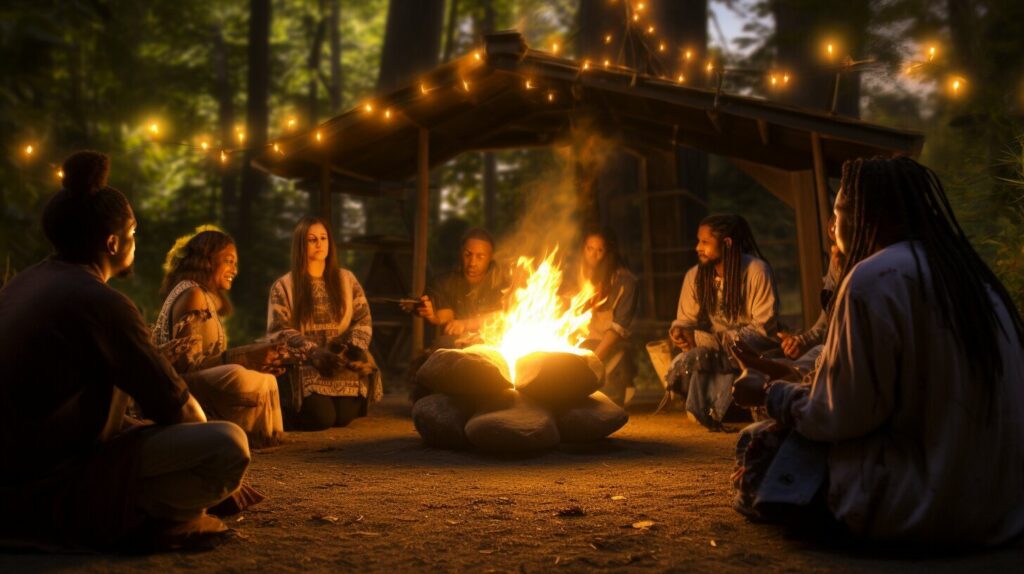
References:
- Smith, J. (2019). Ancestral Healing: Reconnecting with the wisdom of our ancestors. Sacred Fire Magazine, 23(4), 18-22.
- Johnson, L. K. (2020). Cultural Healing Therapies: Embracing traditional practices for well-being. Journal of Cultural Healing, 35(2), 45-56.
Conclusion
Traditional healing practices have withstood the test of time, offering individuals a holistic and culturally rich approach to wellness. From ancient civilizations to modern society, these practices have held onto their significance, demonstrating their enduring wisdom and effectiveness. By embracing traditional healing methods, individuals can tap into the interconnectedness of their mind, body, and spirit and experience the benefits of natural remedies and rituals.
One of the key aspects of traditional healing is the sense of community support and cultural identity that it promotes. Many traditional healing practices involve the active participation of the community, with rituals, ceremonies, and shared practices bringing individuals together in times of illness or imbalance. This collective approach to healing fosters a sense of belonging and connection, enhancing the overall well-being of both individuals and the community as a whole.
In a world where modern medicine and conventional approaches to health dominate, traditional healing practices offer a valuable alternative. By integrating the ancient wisdom of traditional healing with contemporary healthcare systems, individuals can access a comprehensive approach to wellness. By honoring and preserving these traditions, we ensure that the legacy of traditional healing continues to benefit and inspire future generations.
